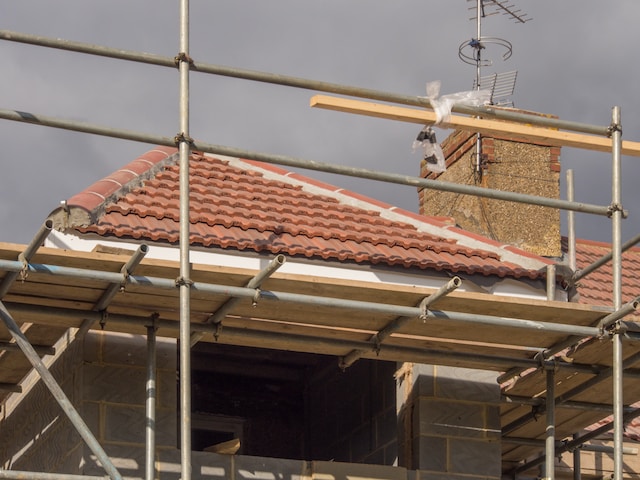
Picture: Unsplash
A hole in the roof can have severe consequences for a building if left unrepaired. It can lead to structural issues, mold formation, and the potential for water leaks and further damage. Promptly addressing the task of repairing a hole in your roof is crucial to prevent additional harm. This article will guide you through the process of repairing a hole in your roof, providing reliable and long-lasting solutions. By following the steps outlined in this article, you can effectively repair the hole and safeguard your building from further damage, ensuring its structural integrity and protecting its occupants.
Tips to Patch a Hole in Your Roof
Assess the Damage:
Before embarking on roof repairs, it is crucial to conduct a thorough inspection to assess the extent of the damage, especially when dealing with a hole in the roof. The first step is to determine the size and location of the hole accurately. Additionally, it’s crucial to assess any potential impact on the surrounding area and underlying structures. This evaluation will provide valuable information on how to fix a hole in the roof effectively, using appropriate materials and techniques. By undertaking a comprehensive examination and preparation, you can approach the repair confidently and ensure its effectiveness.
Gather the Necessary Materials and Tools:
It is crucial to acquire all of the required supplies and equipment before attempting to fix a hole in your roof before beginning the repair. Roofing cement, which functions as an adhesive, is often required to bind the patch in its intended location properly. In addition, roofing nails are required to secure the new shingles or patches to the roof properly. A trowel is a useful tool for spreading the cement uniformly, while a pry bar is often needed to remove any components that have been damaged. During the repair, you must safeguard yourself by donning the right protective gear, including gloves and goggles, and ensuring you have a reliable ladder that provides secure roof access. The patching procedure will go more quickly and efficiently if all necessary supplies and equipment are prepared. This will also increase the likelihood that the repair will be effective.
Prepare the Surface:
It’s important to prep the area by making sure it’s smooth and clean before putting the patch. Get rid of the loose dirt and debris around the hole so that you can fix it securely. Any loose or broken shingles or tiles should be carefully lifted and removed using a pry bar. Remove any dirt, dust, and debris from the area with a broom or brush. This is a crucial first step for the patching material to adhere properly and for the repair to seem smooth. Careful site preparation is the backbone of any effective and long-lasting repair.
Apply the Patching Material:
Apply roofing cement liberally around the hole using a trowel, covering the entire damaged area and extending the cement slightly beyond the borders. This is the most important part of making a reliable seal that won’t leak. After the cement has dried, gently place the roofing shingle or patch over it. Cement the shingle or patch it down firmly by pressing down on it. Roof nails, if used, should be driven gently into the edge of the patch to offer extra stability and support. Following these procedures to the letter will increase the likelihood of a successful and long-lasting repair.
Seal and Finish the Repair:
Applying roofing cement around the perimeter of the repair and over any protruding nails will provide a secure and waterproof seal. Using the trowel, smooth the cement into an equal layer that forms a watertight seal. Check all the edges and ensure they’re sealed correctly by paying special attention to the region around them. Per the manufacturer’s recommendations, the repair should be thoroughly inspected when the roofing cement has dried. Keep an eye out for anything that seems to need more work once the patch has been put in place.
Conclusion
In conclusion, promptly addressing a hole in your roof is crucial to prevent potential structural issues, mold formation, and water leaks. Repairing a roof leak is a challenging job requiring precision and high-quality supplies. You can successfully fix a hole in your roof if you first inspect it, acquire the appropriate supplies, prepare the surface, apply the patching material, and finally seal and complete the repair. Prioritize your safety, and consider getting help from a professional for any major or complicated repairs. A roof repair that is done properly will prevent leaks, save you from further damage and extend the life of the roof.


